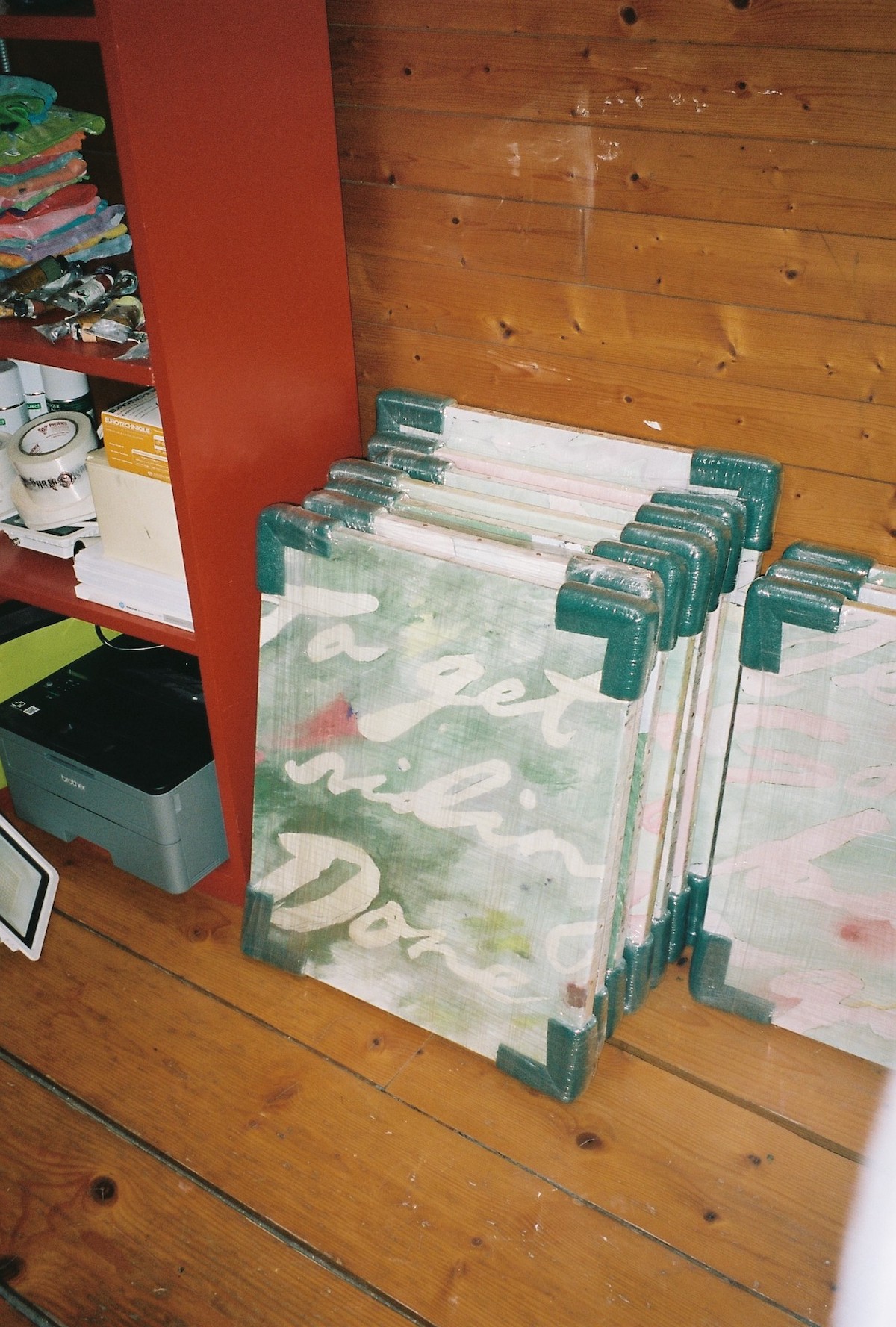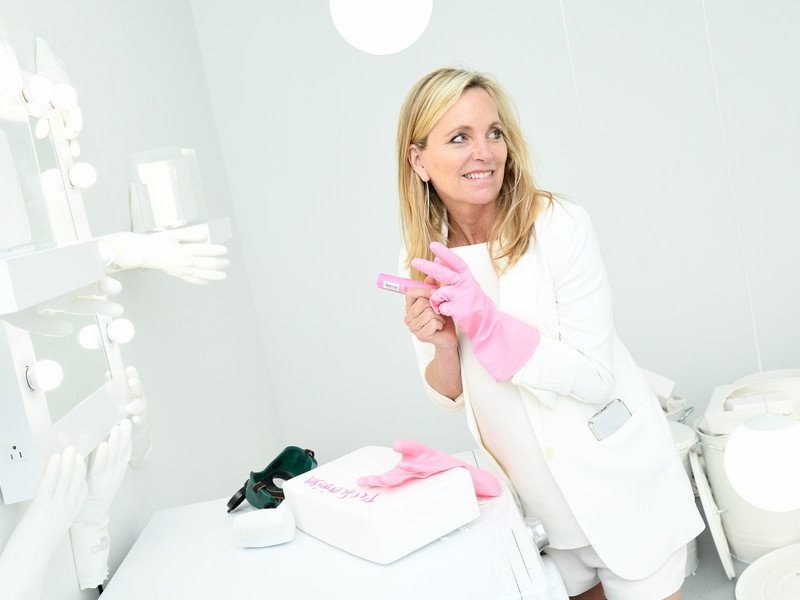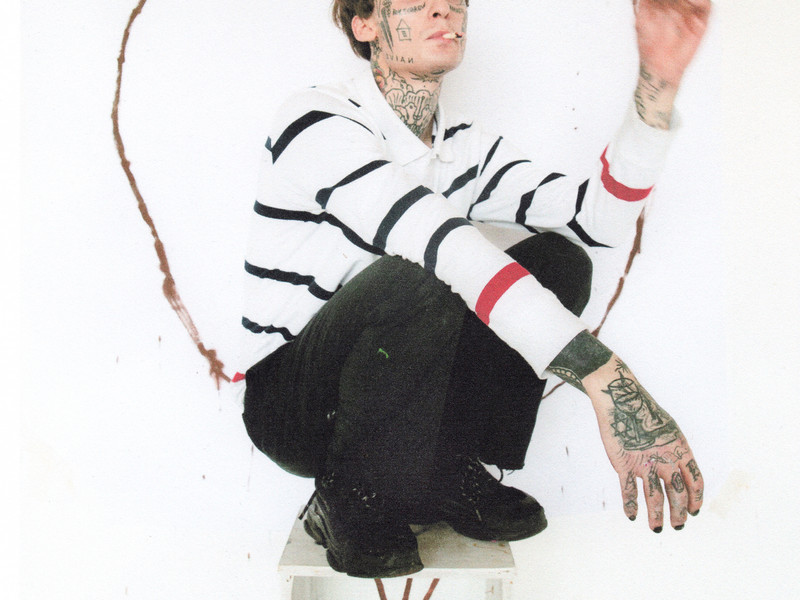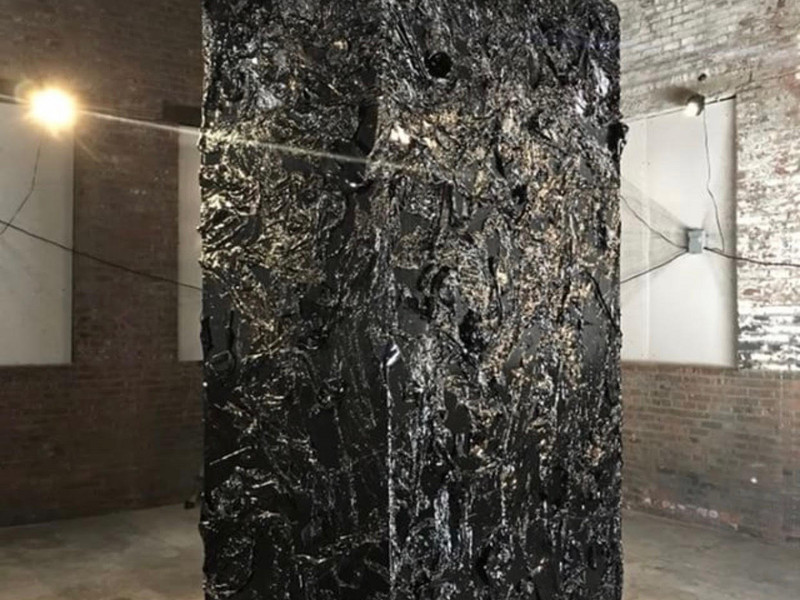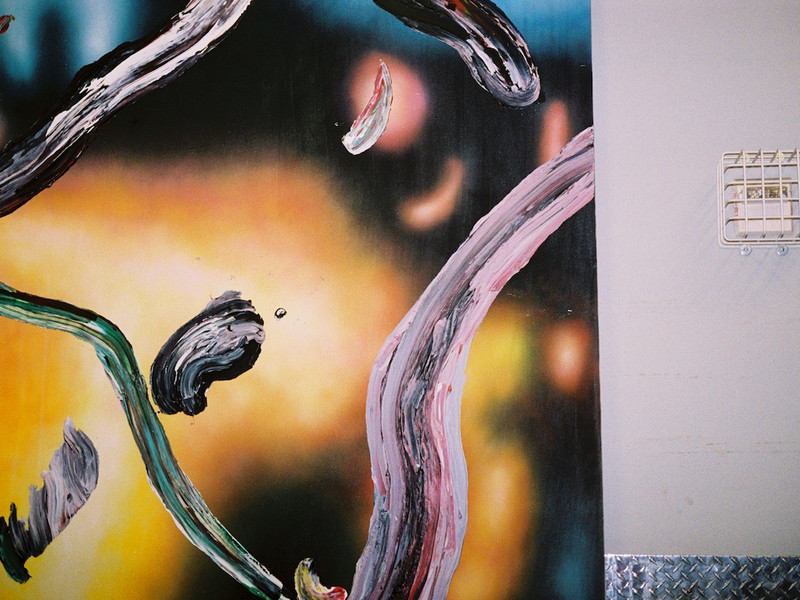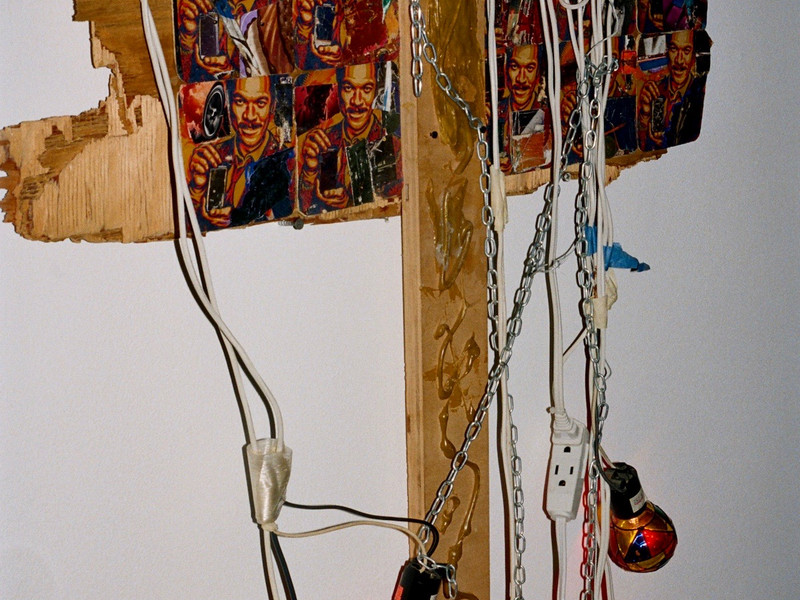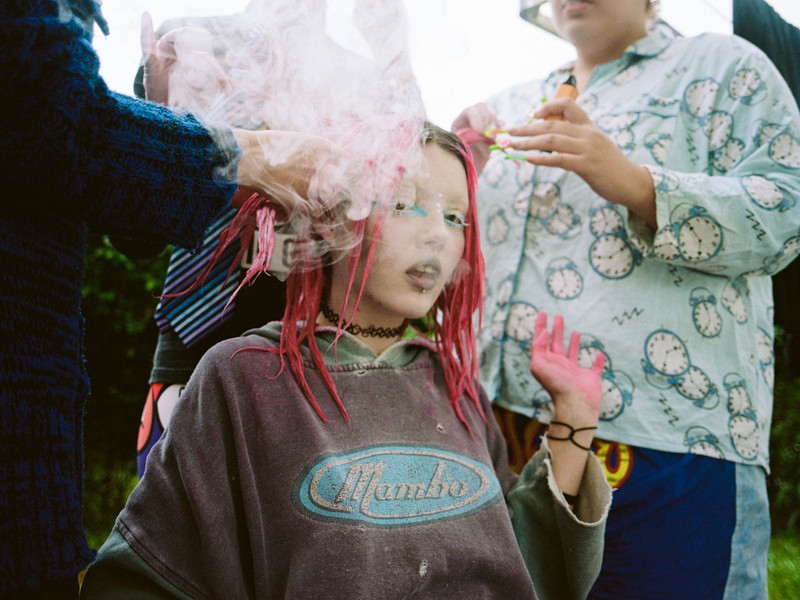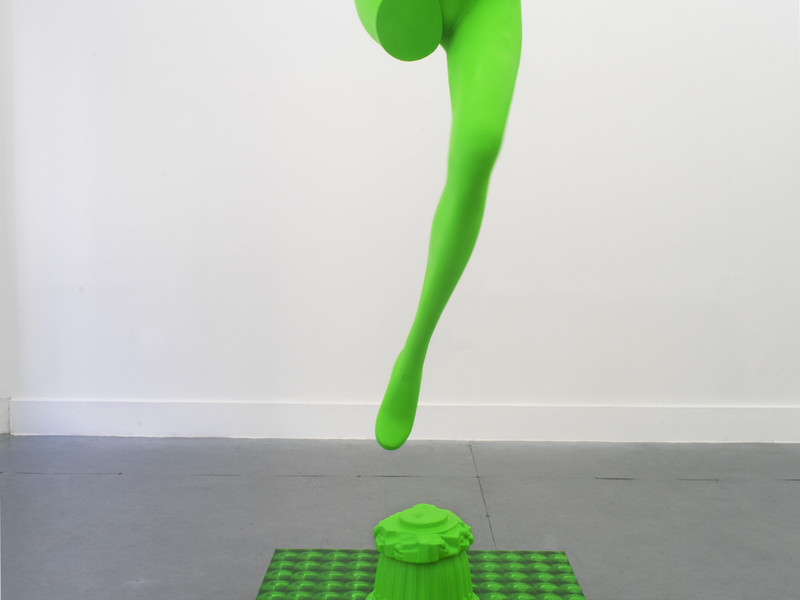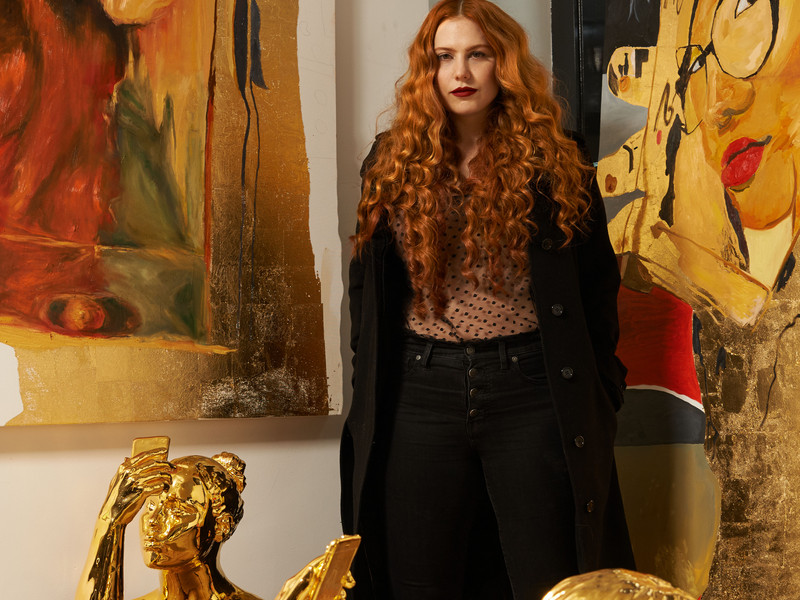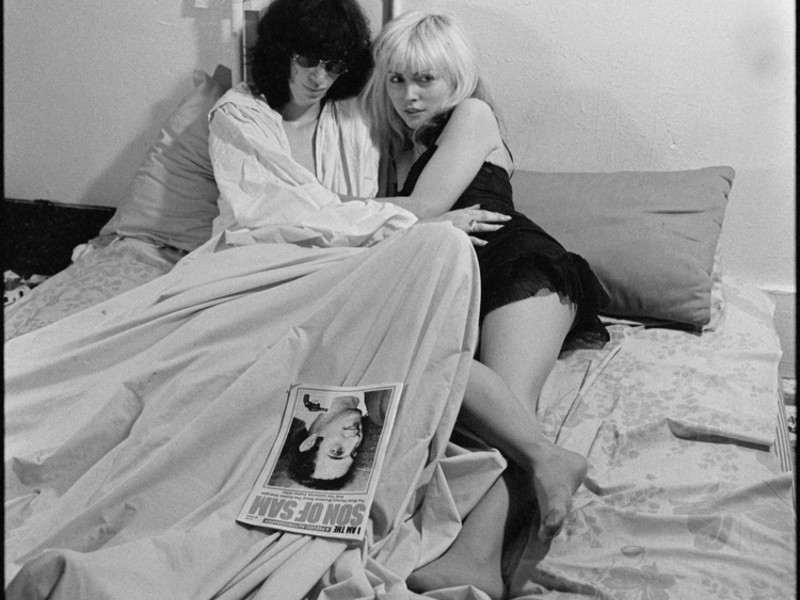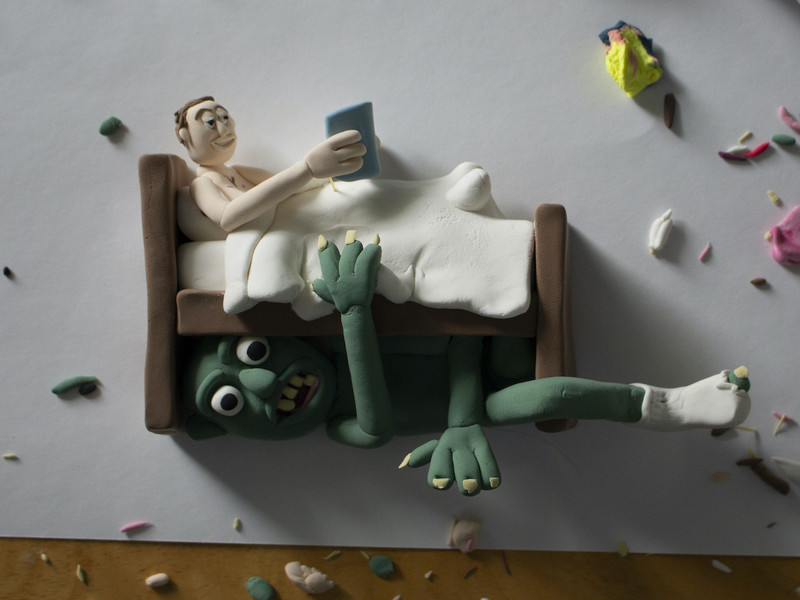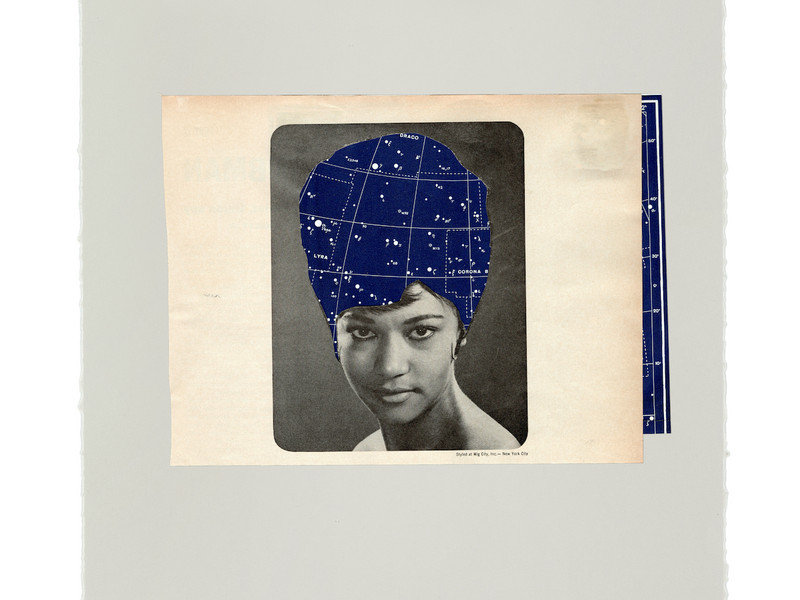Hunger for the Time: Curtis Kulig
Walk up that spiral staircase today, though, and you might find that there’s a crucial thing missing: the artist himself. It’s because Kulig is in Paris, where he’s been holed up for a year. He’d made the move in order to escape the hustle and bustle of New York City, and it’s a decision that has, at the very least visually, served him well — not to mention he’s settled down in a uniquely inspiring house, that has a living tree growing through its living room floor — save for the fact that he may have to settle for a second-best pepperoni slice. But a move across the Atlantic doesn’t necessarily equal a move beyond challenges; when you’ve made it as far as Kulig has, the challenges tend to be self-imposed.
“These sorts of pieces are much more intense to see and hear than most paintings I’ve ever seen,” he says, musing about works that attack multiple senses. “Which makes me think… is painting my medium? I’ve never actually questioned that.”
Few others have questioned it either. When Kulig first moved to New York City in the aughts, his infinitely-interpretable plea, “Love Me” — which, on the average downtown walk, you may find anywhere from the walls of large buildings to the pendants of pedestrians’ chains — went from being a neighborhood fixture to a global brand.
Though his beginnings were defined more by sprawling screenprinting and oil paint practices, the years following his move to New York saw him come increasingly into his own right as a multidisciplinary artist. Much like the jazz and Jack’s meows, another guarantee of his Lower East Side studio is eclecticism: one stroll down the expanse gives way to a ceramic sculpture of stacked boxing gloves about the height of a fifth grader, a Moschino piece he plans to wear in a performance piece in the near future, and a set of hefty pink-hued canvases from a recent series he did. All of which are very fun obstacles, should a certain cat be inclined to turn the studio into a funhouse. On a recent Zoom call with Kulig, with his two new Parisian kittens popping in and out of frame, we talked about art and the American Dream, geography, and the concept of rigor mortis.
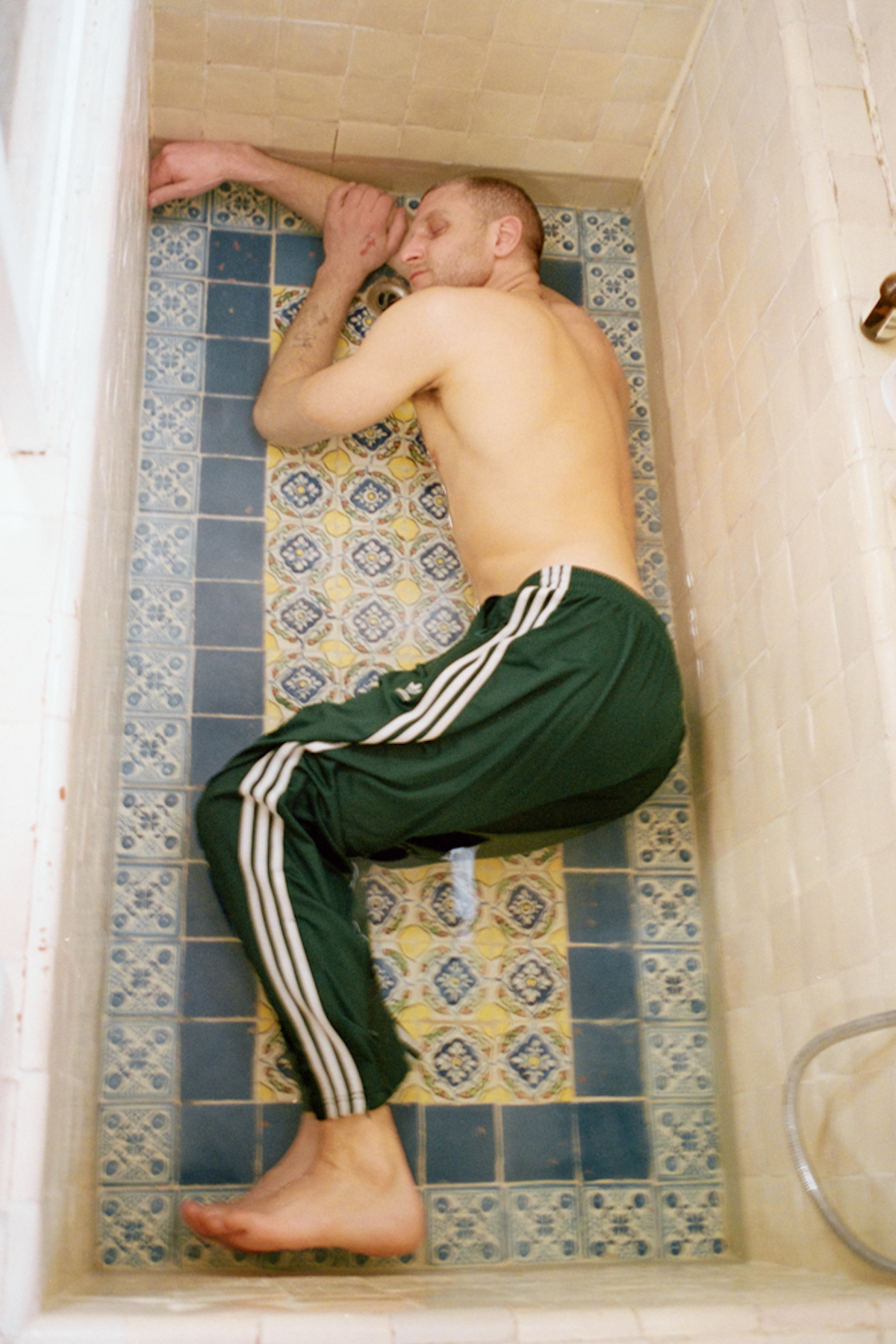
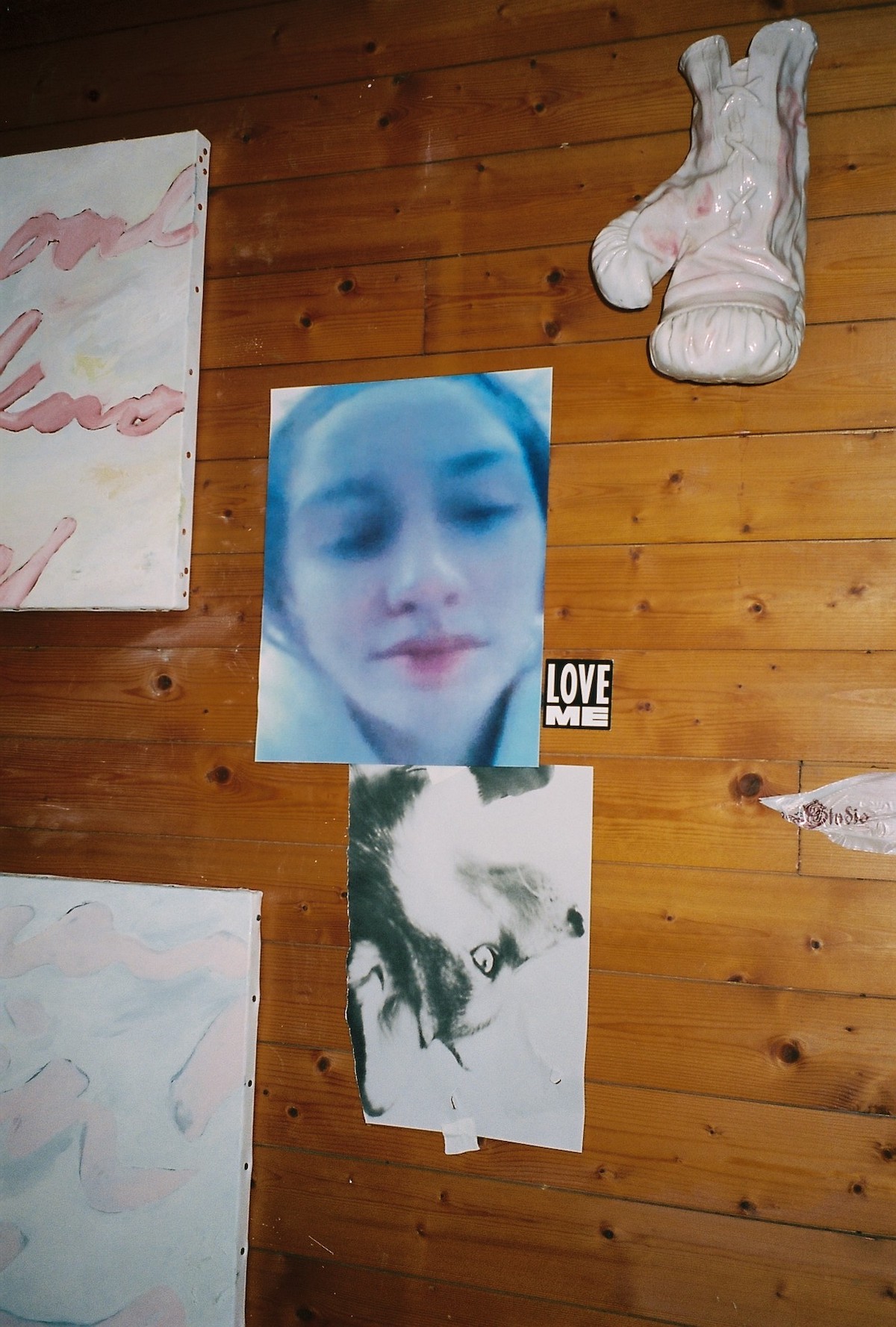
CURTIS KULIG— It was only when I took the time to understand the layout of this studio that I thought to myself, “Oh. A cat would love this.” Trees and stairs and platforms everywhere… It's basically a giant cat house.
SAMUEL HYLAND— Your studio in New York is, too.
CK— Yeah. And the rooftop with the trees and birds and shit… perfect for Jack. But yeah. There’s two of them [new kittens]. One is Rigor Mortis — do you know what rigor mortis is?
SH— It’s like a stiffening of the body after death, right?
CK— Yeah. It’s a crazy concept. It really is. I think there’s a timeframe for it after you pass. Probably like six hours after.
SH— Why would you name your cat that?
CK— One of my friends was talking about it, and I thought it was such a great name. I like the combination of Rigor and Mortis, but Rigor alone could be cool, too. And he also kind of looks like a Rigor Mortis. The other one is named Napkin. So just like that Rigor Mortis and Napkin came together in a weird way. Rigor Mortis fell in the bathtub the other day, with the water in it. The thing is, with Jack, I never had any drama. He was from the street. These cats, I’ve had for maybe three months, and I’ve brought them to the vet like six times. They’re bourgeois cats. Anyway, Rigor Mortis fell in the bathtub, and he was barely breathing when I took him out. It was so dramatic. I thought, “Maybe I shouldn’t name my cat Rigor Mortis.” Have you been to Paris before?
SH— Nope. Tell me about it.
CK— They say the layout of Paris is like a snail. The middle is the first district, and then it sort of spirals outward to create the shell. I think of it as a large-scale West Village. West Village is probably one of the only areas in New York where I can get lost. But the whole city of Paris is like that. You make one wrong turn, and you’re somewhere completely different than where you intended. I used Google maps for the first bit that I was here. And I always wear headphones on my walks, because interestingly, I feel very anonymous here. In New York I can’t make it a block without a run in. Here I can walk around here, and sure, I’ll run into somebody I know sometimes, but much less in New York. In New York, I never go outside with headphones in. Here, I never take them out.
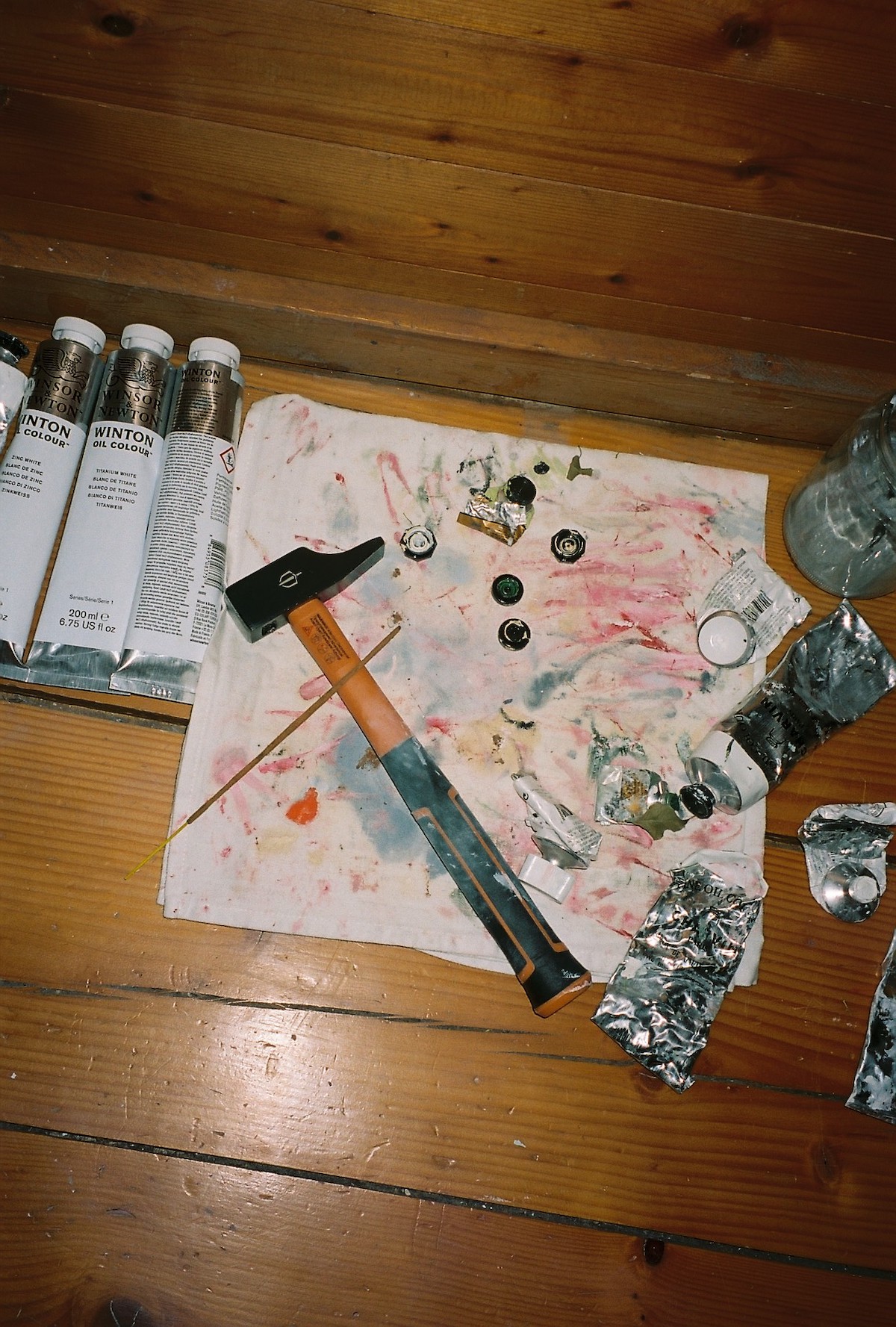

SH—Music is always playing at your studio –at least in New York. Why?
CK— There’s so many songs that I listen to repetitively. I’m such a repetitive listener. If I get, like, four songs that I feel a certain type of way about, I can’t stop. Especially for painting. For painting, I either do complete silence, for the serene experience of hearing the brush and paint move — did I just say that [laughs] — or jazz. I’ve been into Ethiopian music as well. But I’ll listen to the same song 25 times in an hours. It informs these movements that I want to keep accessing, so I use the music to reverberate what I’m doing.
SH— I feel like you’ve probably answered the New York/Paris question a ton of times, but a specific thing I wonder about is the foot traffic. Do you find it significantly different in either place?
CK— It took me leaving the New York bubble to realize how much of a circus downtown really is. I miss that energy. It’s a free-for-all. Say what you want to say, walk where you want to walk, cross the street when you want to cross the street, wear fucking angel wings, who cares. But also, it’s a complete circus in the most organized way. It’s such a beautiful thing. It’s where you go to do whatever you want. And I feel like I’ve always known it subconsciously — all the cliche stuff like, anything’s possible in NYC… the melting pot. But it’s so cliche because it’s so real.
SH— You briefly came back from Paris late last year. I imagine that must have been some crazy whiplash.
CK— I came back for a month. Life shouldn’t be about how much you can get done and/or how quickly you can get it done, but me working in New york for a month I didn’t even accomplish in ten months of being in Paris. There’s this weird sort of blasé tone. In New York — or maybe in America — there’s this odd take on the American Dream, where “you live to work.”
SH— Where would you say you naturally fall? Working to live, or living to work?
CK— I live to work. But with that said I’m an artist. It’s not really work for me most of the time, it’s just kind of my existence. All I do is make art, and if I’m not making art, I’m still making art. That’s what I think I’m here for. That’s what comforts me.
SH— Ending on a vague note — but what’s the plan?
CK— The plan is to keep making work that I feel needs to be made. Work that feels thoughtful right now, feels right with what's been done in the past and work that will feel relevant in the future . I think the more honest I can be with myself about that, the better I’ll feel.
Also, just making the world a better place. Which might sound as generic as it gets… but also maybe not so generic. The world would be much better if as many people actually did it as the amount of people that say they want to.
